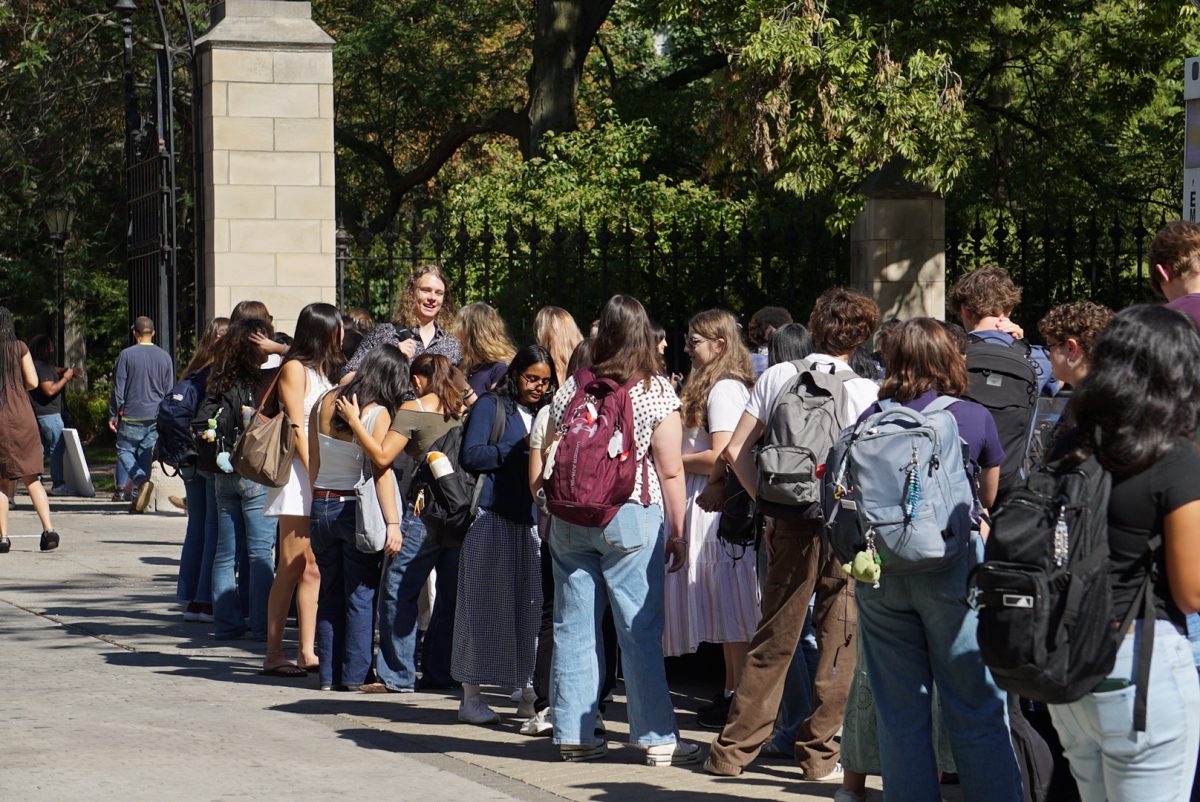Forty people—generally men walking alone—have been attacked by groups of teenagers at various times of the day in Hyde Park since January 31, according to University administrators and the University of Chicago Police Department (UCPD). The UCPD and the Chicago Police Department have jointly arrested 33 perpetrators who committed at least 13 of the assaults.
The assailants have used anything from their hands, feet, clubs, bats, chemical spray, a razor, and a BB gun to beat or intimidate victims. Though in some cases victims have been robbed, the perpetrators have often attacked without any prior confrontation or apparent motive. Some University students have suffered minor injuries from the assaults, although one student was hospitalized after being severely injured, but is expected to recover fully.
Kenwood Academy, on 5015 South Blackstone Avenue, is near the area where most of the more recent attacks have occurred. “Some of [the attackers] are known to be from Kenwood High School,” said Bob Mason, executive directive of the South East Chicago Commission. The majority of the attackers have been between 14 and 16 years old, making them mostly freshmen and sophomores in high school.
Investigators remain puzzled by the motive behind the attacks. “Why do people want to hit others for no reason at all?” Mason asked. University administrators, police officers, and Kenwood Academy students have offered various theories, but no one has a clear explanation for what is prompting the attacks.
“We haven’t penned down any specific motives,” said Rudy Nimocks, executive director of the UCPD.
Given the large number of perpetrators that have already been arrested for just one-third of the cases, it appears that there is a pattern to the attacks, and not simply a string of repeated incidents by a select group. “Is there some sort of fad—game if you will? It’s hard to fathom,” Mason said.
Duel Richardson, director of neighborhood relations in the Office of the Vice-President of the University, considers these crimes as an attempt for teenagers to gain peer acceptance. “I’ve heard speculation that this is ‘a thing to do,'” he said.
A group of seniors sitting outside of Kenwood Academy on Wednesday afternoon expressed frustration that students from their school are responsible for some of the assaults. “It makes us look bad,” Zane Romano said. “It makes people typecast people in our school.”
“It degrades everyone,” added Julien Bracey, another Kenwood student.
The students placed the blame on underclassman immaturity and susceptibility to peer pressure. “Maybe because they get into a bad crowd and they try to fit in, and they feel like that’s what they have to do,” Dominique Webster said. She added that students were especially upset about the attack on a woman who was pushing a baby stroller. “People felt it was wrong,” she said.
Kenwood Academy administrators have organized and invited police officials to several assemblies with freshmen and sophomores. Arthur Slater, the principal of Kenwood Academy, was unavailable on site and did not respond to multiple phone calls.
In all cases, the victims have been outnumbered by the assailants, who mostly attack in groups of greater than three.
Administrators warn that being inattentive while walking around the neighborhood puts people at risk for assault. Richardson cited several cases in which the attackers chose targets who were listening to music or talking on a cell phone. “The single most important thing is [for students] to be alert as possible when they’re walking—especially when they’re alone,” Richardson said.
University administrators emphasized their hope that the campus-wide e-mail sent from Hank Webber, vice president of the Office of Community and Government Affairs, and the posted, e-mailed, and faxed security alert system notices would induce students to alter their behavior.
“I believe that until this pattern resolves itself—and I hope that is extremely soon—people should and will change their behavior,” Webber said.
Richardson suggested that students switch directions if they feel uneasy, or carry a whistle, which the UCPD provides for $1.50. He advised against Mace and pepper spray, saying that these supposed deterrents often anger attackers.
On Monday, about 1,500 University members were signed up for the security alert system e-mail service. After the e-mail from Webber provided a link for the listhost’s site, about 350 more people signed up. “I view this as a positive response,” Webber said.
“It’s still a dismal number of the total University population,” Richardson said, though he said beforehand he was glad that more were enrolled in the service.
In its May meeting, the Committee on University Crime Prevention will be considering methods to make the security alert system more widely used. According to Richardson, the group will be considering a student proposal that all University students be automatically subscribed to the service and then given the option to unsubscribe.
The crime pattern’s unprecedented nature has officials racking their brains for an explanation. “In the 14 years that I’ve been alderman—this is just extraordinary,” said Toni Preckwinkle, the aldermen of the Fourth Ward, which encompasses Hyde Park. Of Hyde Park, Preckwinkle said, “It’s a relatively safe haven.”
Richardson, who attended the University in the 1960s, said that the neighborhood was not as safe when he was a student. “The crime rate has gone down dramatically over the past 40 years,” he said. “Overall, Hyde Park is one of the safest places in the city.”
Webber and his colleagues maintain that the new crime pattern is “an aberration.”








